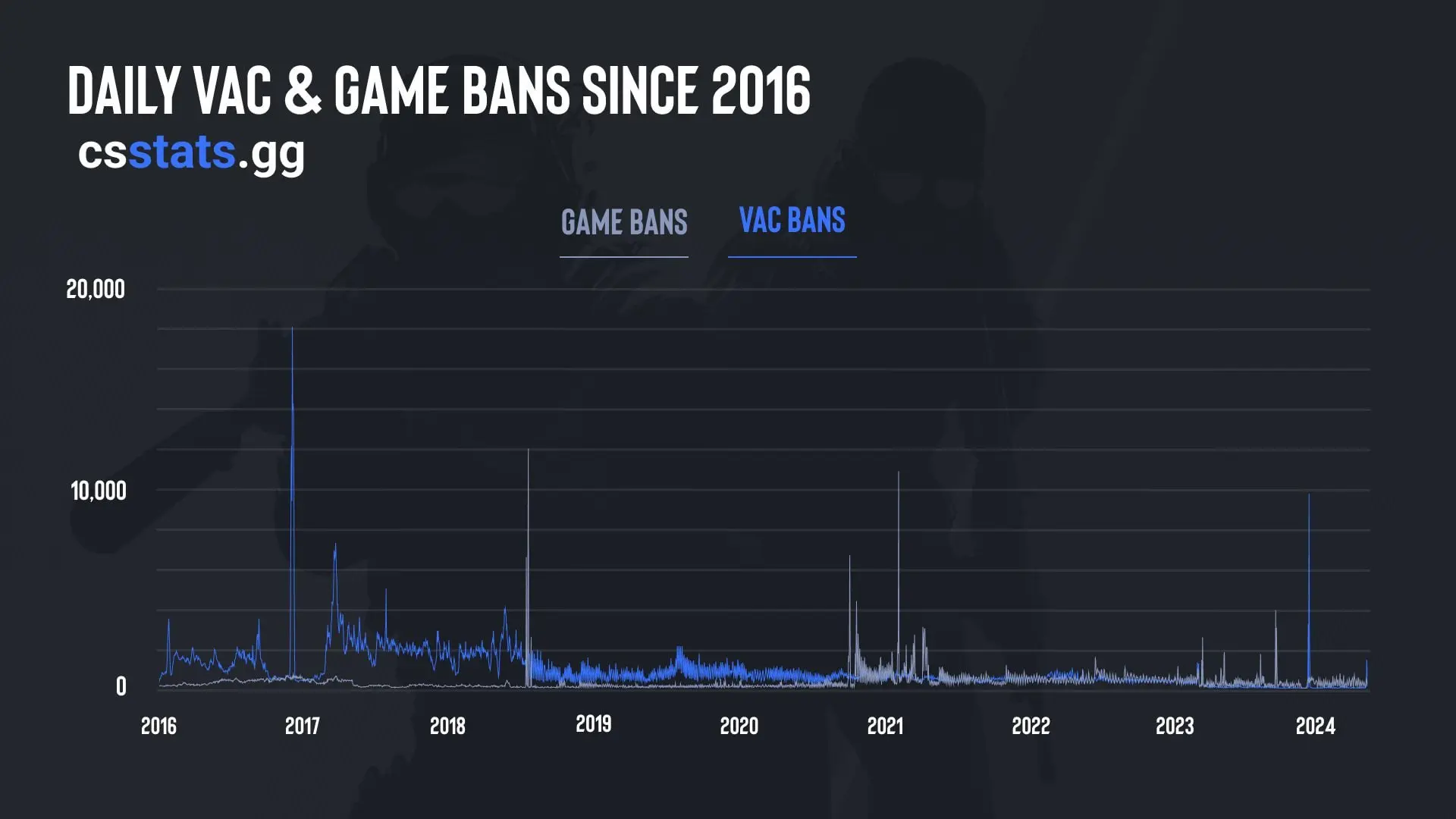Aladingsc Insights
Your go-to source for trending news and informative guides.
Understanding the VAC Ban Mystery
Unravel the secrets of the VAC Ban mystery and discover how to protect your gaming account! Click to find out more!
What is the VAC Ban and How Does It Work?
The VAC Ban, or Valve Anti-Cheat Ban, is a security feature introduced by Valve Corporation to maintain the integrity of competitive gaming within its popular titles such as Counter-Strike: Global Offensive and Dota 2. When a player is detected using cheats or third-party software that gives an unfair advantage, their account may receive a VAC Ban. Once enforced, this ban restricts the player from joining VAC-secured servers, thus ensuring a fair playing environment for others. Importantly, the ban is permanent, and players are unable to appeal it, as Valve emphasizes their commitment to a cheat-free gaming experience.
Understanding how the VAC Ban works is key for players looking to avoid it. The system utilizes advanced algorithms to detect cheating software running on the player’s system while the game is active. This detection can occur even if the cheats are only activated during gameplay. Moreover, the VAC Ban is applied only after sufficient evidence is collected, and the enforcement is not instantaneous—Valve typically takes time to analyze data to avoid false positives. Following a ban, the affected player will receive a notification, and it’s essential for players to familiarize themselves with the rules and guidelines set forth by Valve to ensure they remain within the fair play framework.

Top Myths About VAC Bans Debunked
When it comes to VAC bans, a plethora of myths circulate among gamers that can cloud understanding of how these bans actually work. One of the most prominent myths is that VAC bans are handed out indiscriminately or due to mere suspicion of cheating. In reality, Valve's Anti-Cheat (VAC) system utilizes advanced algorithms and rigorous checks to detect cheating software. Each ban is based on definitive evidence, meaning that players are only banned if their account has been linked to confirmed cheating incidents, not just for the use of software that might raise a red flag.
Another common misconception is that once a player receives a VAC ban, it's game over for their Steam account and all associated games. This is simply not true. While a VAC ban does prohibit one from playing on VAC-secured servers for affected games, players can still access their game library, play offline, and enjoy other single-player modes. Furthermore, those who face a VAC ban can learn from their mistakes and create a new account to play, albeit they should do so while adhering to the rules to avoid repeating past errors.
How to Appeal a VAC Ban: A Step-by-Step Guide
If you've found yourself on the receiving end of a VAC ban and believe it was unjust, you may consider appealing the decision. The first step in how to appeal a VAC ban is to gather all relevant information regarding your account and the ban itself. Review the ban notification to understand the exact reasons provided by Valve. Additionally, compile any evidence that supports your case—whether it's screenshots, logs, or related correspondence. This documentation will be crucial in building a strong case during your appeal.
Next, navigate to the Steam Support page and select the option for VAC Bans. You'll want to submit a detailed appeal through the provided forms. Ensure you articulate your argument clearly and concisely, using the evidence you've collected to support your claims. Remember to remain respectful and professional in your communication, as this can significantly impact the outcome of your appeal. Keep track of your submission, and be prepared for a waiting period while Valve reviews your case. If you don't receive a response after a reasonable time, you might consider following up for clarity.